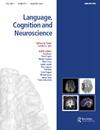When does speech planning rely on motor routines? ERP comparison of speech and non-speech from childhood to adulthood
IF 1.8
3区 医学
Q2 AUDIOLOGY & SPEECH-LANGUAGE PATHOLOGY
引用次数: 0
Abstract
ABSTRACT Speech is an extensively overlearned oromotor behaviour that becomes more automatised over the years due to the storage of their motor routines. To determine when this storage occurs in development, the EEG/ERP spatiotemporal dynamics underlying speech-motor planning were investigated in three groups: children, adolescents and adults. The production of speech was contrasted to sounded non-speech gestures that use the same effectors as speech but are not as frequently trained. Non-speech motor codes are assumed to be individually planned on the go, instead of being stored as motor routines. Neural results revealed a gradual differentiation between speech and non-speech motor planning with age: while ERPs did not differ in children, adolescents and adults showed gradually increasing differences in amplitudes and in topographies between speech and non-speech. This suggest that the speech motor code storage is not completely established yet in 7–9-year-old children but later during development, in early adolescence.语音规划什么时候依赖于运动程序?儿童期至成年期言语与非言语ERP比较
摘要言语是一种过度学习的或运动行为,随着时间的推移,由于其运动程序的存储,这种行为变得更加自动化。为了确定这种存储在发育过程中何时发生,对儿童、青少年和成年人三组进行了语音运动规划的EEG/ERP时空动力学研究。语音的产生与听起来的非语音手势形成对比,后者使用与语音相同的效应器,但没有那么频繁地训练。非语音马达代码被认为是在旅途中单独规划的,而不是作为马达例程存储。神经结果显示,随着年龄的增长,言语和非言语运动计划之间逐渐分化:虽然儿童、青少年和成年人的ERP没有差异,但言语和非语言之间的振幅和地形差异逐渐增加。这表明,7-9岁儿童的言语运动代码存储尚未完全建立,但在发育后期,即青春期早期。
本文章由计算机程序翻译,如有差异,请以英文原文为准。
求助全文
约1分钟内获得全文
求助全文
来源期刊

Language Cognition and Neuroscience
AUDIOLOGY & SPEECH-LANGUAGE PATHOLOGY-BEHAVIORAL SCIENCES
CiteScore
4.50
自引率
13.00%
发文量
70
期刊介绍:
Language, Cognition and Neuroscience (formerly titled Language and Cognitive Processes) publishes high-quality papers taking an interdisciplinary approach to the study of brain and language, and promotes studies that integrate cognitive theoretical accounts of language and its neural bases. We publish both high quality, theoretically-motivated cognitive behavioural studies of language function, and papers which integrate cognitive theoretical accounts of language with its neurobiological foundations.
The study of language function from a cognitive neuroscience perspective has attracted intensive research interest over the last 20 years, and the development of neuroscience methodologies has significantly broadened the empirical scope of all language research. Both hemodynamic imaging and electrophysiological approaches provide new perspectives on the representation and processing of language, and place important constraints on the development of theoretical accounts of language function and its neurobiological context.
 求助内容:
求助内容: 应助结果提醒方式:
应助结果提醒方式:


